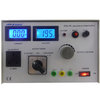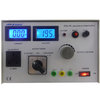Amongst the 3 other mistakes I’ve already made in trying to get an RCA Victor 4ra31 tube radio to work, I inadvertently replaced C12, the cap I have circled in schematic, with a non-polarized cap. It actually ran for a bit like this, but I ended up blowing the filament in the rectifying tube shown right beside of it. Was this perhaps why, or could I actually get away with this substitution?
https://imgur.com/a/6m2vUp8
I know this is an old post. If you are still trying to get this going, here is some advice. From what I can see of your schematic, you are working on an old AM radio. They were known as the "All American Five" as they have 5 tubes. Many companies made radios like these. They are extremely dangerous to work on as one of the two power cord wires is connected to the chassis. They used non-polarized plugs back then. If the plug is inserted into the wall outlet one way, the chassis will be at neutral. The other way and it will be live with 120VAC. If you touch the chassis when it's live, you could be electrocuted (death from electricity). You should always have an isolation transformer when working on equipment like this when it is powered on.
About the caps. Electrolytic caps on a schematic will show a "+" sign, (that is how you tell if it's an electrolytic) which designates where the positive end is attached to, like C118 is. Electrolytics usually have a higher capacitance rating, such as 1uf and higher. In a radio like that it is best to change all the electrolytics as they are only good for about 15 years or so. The non-polars will be any other cap in the radio. Many will be tubular and have a wax coating on them. Some may not have wax but have a plastic looking body. All of these tubular looking caps including the electrolytics are known as paper caps. They have paper inside instead of aluminium, foil or any of the other newer materials used today. They are dangerous to leave in as they are worn out and leaking DC through them.
A caps' number one function is to block DC from passing through it. DC passing through them causes hums, over voltages on tubes, and shorts. Also, the tubes as well as the resistors will need to be tested. You can test most resistors right in the radio with an ohm meter. Bad or out of tolerance resistors will cause many problems. They can be a little out of tolerance in tube devices, as the values don't need to be as critical as they need to be in solid state circuitry. New caps should not be leaking DC through them unless they are faulty, which is not likely or unless they were installed backwards.



